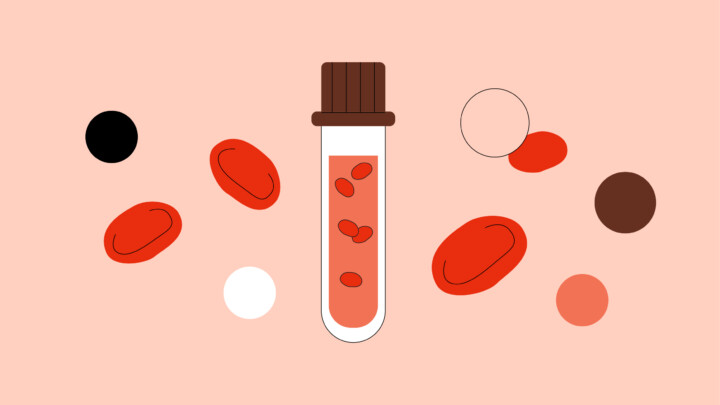
For decades, physicians have relied on tools like the ASCVD risk calculator to predict the likelihood of cardiovascular events. These tools have become a staple in clinical practice, guiding decisions on everything from statin therapy to lifestyle interventions.
Many physicians find existing tools useful, but limited. “I use the ASCVD risk calculator… but it may overestimate or underestimate risk depending on various factors,” shares a general practitioner on Sermo. This is where new innovation comes in. The American Heart Association (AHA) recently developed PREVENT (Predicting Risk of cardiovascular Events), a new cardiovascular disease risk assessment tool designed to offer more accurate predictions. By incorporating updated data and new variables, PREVENT aims to address the shortcomings of its predecessors.
Why cardiovascular risk prediction needs an update
The Pooled Cohort Equations (PCEs), commonly known as the ASCVD risk calculator, were a significant step forward when they were introduced in 2013. They consolidated key cardiovascular disease risk factors—like age, cholesterol levels, blood pressure and smoking status—into a single cardiovascular disease risk score. This score helps clinicians and patients understand the patient’s 10-year risk of a major cardiovascular event.
While the ASCVD risk calculator is the “first option in general medicine,” as one general practice physician on Sermo puts it, other Sermo community members note its limitations along with similar tools like the Framingham risk score. In a poll of Sermo members, 58% said existing risk calculator tools are only somewhat effective, 22% that they’re very effective, and 11% voted that they’re not very effective, with many cases missed or overestimated.
For one thing, the data used to develop these equations is now several decades old. “Such prediction models are always backward looking,” expresses one pathologist on Sermo. “How will such models perform in the future?”
It’s true that the demographics, lifestyles and environmental exposures of today’s patient populations are different from those of the cohorts used to build the original models. Among surveyed Sermo members, 15% said that they think outdated data inputs are the biggest limitation of current cardiovascular risk assessments.
This means the tool may not accurately capture the cardiovascular disease risk of a 45-year-old patient today whose lifestyle and metabolic health profile differ significantly from a 45-year-old in the 1990s. The PREVENT model, by contrast, incorporates more current data and includes kidney disease and the social deprivation index (SDI) as risk factors. It also notably omits race from the calculation, aiming for a more equitable and biologically sound assessment.
Additionally, established models may leave out certain factors that could be useful in risk prediction. “Sociological developments are leading us to consider new parameters that could influence the prognosis of cardiovascular disease and that are not currently included,” writes an internist on Sermo. “These include a history of certain infections, migration, pollution and weight.”
A gastroenterology and internal medicine resident also expresses reservations: “I’ve always used ASCVD calculator as an auxiliary decision making tool, however I’ve always believed that it underscores risk in young patients and those with other conditions associated with chronic inflammation and increased CVD risk such as patients who live with HIV or autoimmune diseases such as Rheumatoid arthritis.”
The most commonly selected poll response (39%) stated that the most significant limitation of current risk calculators is their limited accuracy in diverse populations. The original datasets were predominantly composed of white and Black individuals, which means the cardiovascular disease risk score may be less reliable for patients of Hispanic, Asian or other ethnic backgrounds.
Beyond data limitations, the risk prediction models also have practical challenges. Workflow inefficiencies can hinder the consistent use of these tools, as highlighted by 26% of survey respondents. If a cardiovascular disease risk calculator is not seamlessly integrated into the electronic health record (EHR), it adds yet another task for the physician to action following a patient encounter.
Lastly, 13% of survey participants believe that the main limitation of the calculators is that patients don’t always understand their results — or act on them. A 10-year risk score of 8% might be clinically significant, but it can be an abstract concept for a patient. For prevention to be effective, patients need to grasp their personal risk and be motivated to act.
Equity and adoption: would better cardiovascular risk tools make a difference?
Sermo members are generally in favor of adopting new prediction models designed for improved accuracy across diverse populations. In a poll, 31% said they’d “definitely” be interested, and another 46% said they would be interested, provided the tools have peer-reviewed validation.
The omission of race in the PREVENT calculator was intended to create a more equitable model. Race is a social construct, not a biological one, and its use in risk calculators has been criticized for perpetuating health disparities. By replacing race with the social deprivation index—a measure of neighborhood-level disadvantage—the new tool aims to capture the socioeconomic and environmental factors that truly drive health outcomes, according to the AHA.
Some Sermo members favor adopting a new tool that improves prediction for underserved groups, while others maintain reservations. “Equity is great, would also want the best tool for the job regardless of race,” comments a hospitalist.
In a poll, 45% said they’d personally adopt the tool depending on cost and training needs, 31% said they would adopt the tool — believing that equity should drive innovation — but 13% said they wouldn’t, preferring universal tools with broad validation. “It would be useful to demonstrate that calculating this risk leads to lower morbidity and mortality,” expresses a family medicine doctor.
An internist suggested that the best tool could be an update to existing models, or a range of tools that suit specific demographics: “These tools must evolve to be applied globally, or perhaps we should use the most appropriate one for our particular patient population.”
Integration, AI, and the future of prediction
Physicians on Sermo have discussed the qualities they’d like to see in prediction tools looking ahead. For example, “EHR integration would strongly improve physicians’ use of these measures,” according to a psychiatrist in the community. If a new tool can be integrated directly into existing workflows, automatically pulling relevant data from the patient’s chart, it removes a significant barrier to use.
The field of cardiovascular disease prediction is poised for further evolution, largely driven by artificial intelligence. “New prediction tools powered by AI, imaging, and genetic data could improve accuracy beyond traditional calculators like Framingham or ASCVD,” believes one vascular surgery resident on Sermo. “They can integrate more variables, detect subtle patterns, and personalize risk estimates, especially for younger patients or those with borderline risk factors.” An internal medicine physician echoes this optimism: “AI can be a tremendous help.”
However, the rise of AI in healthcare also presents challenges. A “black box” AI model that provides a risk score without a clear explanation of its reasoning may not be trusted by clinicians or easily communicated to patients.
Key takeaways
The landscape of cardiovascular disease risk prediction is evolving. While established tools like the ASCVD risk calculator remain widely used, Sermo members indicate a strong appetite for innovation. Most physicians are open to adopting new models like PREVENT, but their enthusiasm is tempered with caution. They want to see robust, peer-reviewed validation, seamless integration into their daily workflows and clear evidence that these new tools lead to better, more equitable patient outcomes.
The path to more accurate and equitable cardiovascular disease prediction is ongoing, and the voice of practicing physicians is crucial in shaping its future. Sermo members are actively discussing the future of cardiovascular risk assessment along with other recent developments in healthcare. Sign up for free to connect with a community of more than one million verified physicians, and share your unique perspective into topics like these.















